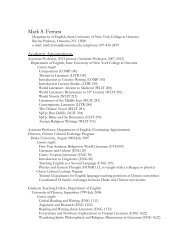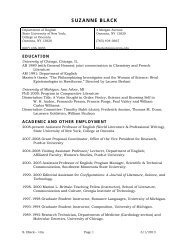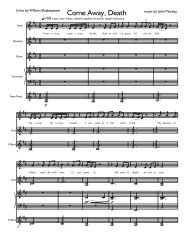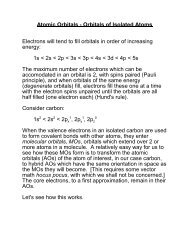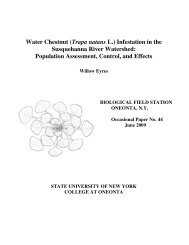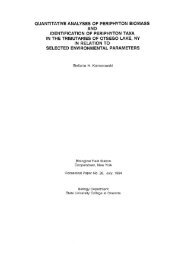Chapter 7 Electron Configurations and the Properties of Atoms 7.1 ...
Chapter 7 Electron Configurations and the Properties of Atoms 7.1 ...
Chapter 7 Electron Configurations and the Properties of Atoms 7.1 ...
You also want an ePaper? Increase the reach of your titles
YUMPU automatically turns print PDFs into web optimized ePapers that Google loves.
<strong>Chapter</strong> 7 <strong>Electron</strong>ic <strong>Configurations</strong> <strong>and</strong> <strong>the</strong> <strong>Properties</strong> <strong>of</strong> <strong>Atoms</strong><br />
Sulfur has two 3p orbital vacancies <strong>and</strong> can <strong>the</strong>refore gain two electrons.<br />
The total number <strong>of</strong> electrons gained when an element forms an anion is related to <strong>the</strong> electron<br />
configuration <strong>of</strong> <strong>the</strong> element. In <strong>the</strong> case <strong>of</strong> Cl, only one electron is gained because a second electron<br />
would occupy <strong>the</strong> higher-energy 4s orbital. An electron in this orbital is far<strong>the</strong>r from <strong>the</strong> nucleus <strong>and</strong><br />
<strong>the</strong>refore feels less attractive “pull” from <strong>the</strong> nucleus. For <strong>the</strong> same reason, sulfur is <strong>of</strong>ten found as a<br />
2 anion <strong>and</strong> not a 3 anion.<br />
Finally, not all main-group elements commonly form ions. The Group 1A, 2A, <strong>and</strong> 3A metals lose<br />
lone, two, <strong>and</strong> three electrons, respectively, to form cations where <strong>the</strong> charge on <strong>the</strong> cation is equal to<br />
<strong>the</strong> group number. The Group 5A, 6A, <strong>and</strong> 7A nonmetals gain three, two, <strong>and</strong> one electrons,<br />
respectively, to form anions where <strong>the</strong> charge on <strong>the</strong> anion is equal to (8 <strong>the</strong> group number). The<br />
Group 4A elements, however, are not commonly found as +4 or 4 ions because <strong>the</strong> gain or loss <strong>of</strong><br />
four electrons requires a great deal <strong>of</strong> energy.<br />
EXAMPLE PROBLEM: Write electron configurations for anions.<br />
Write electron configurations for <strong>the</strong> following ions in spdf <strong>and</strong> orbital box notation.<br />
a) O 2 (Do not use noble gas notation.)<br />
(b) I (Use noble gas notation.)<br />
SOLUTION:<br />
- 24 -



